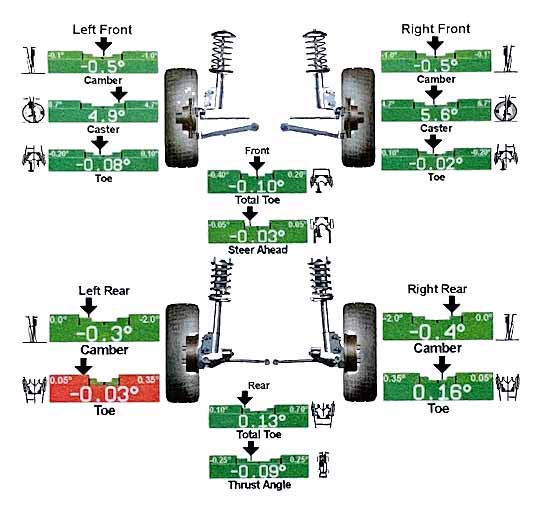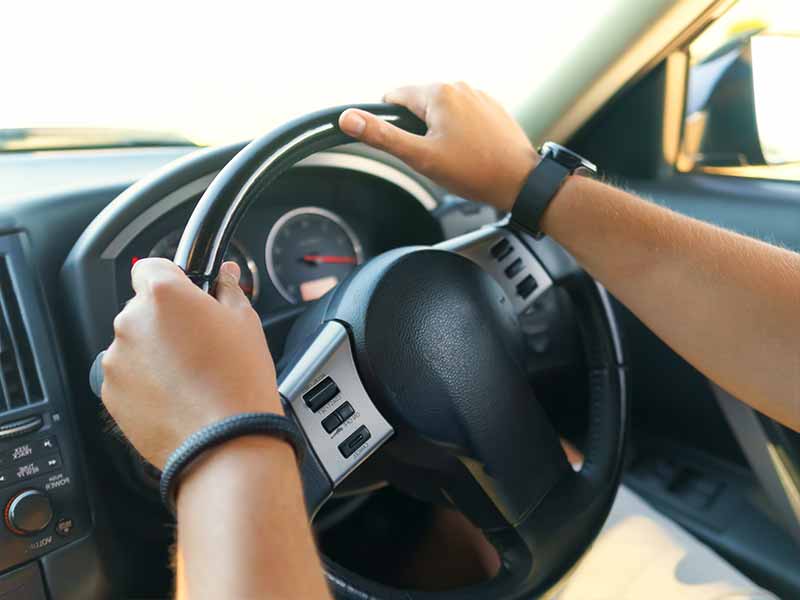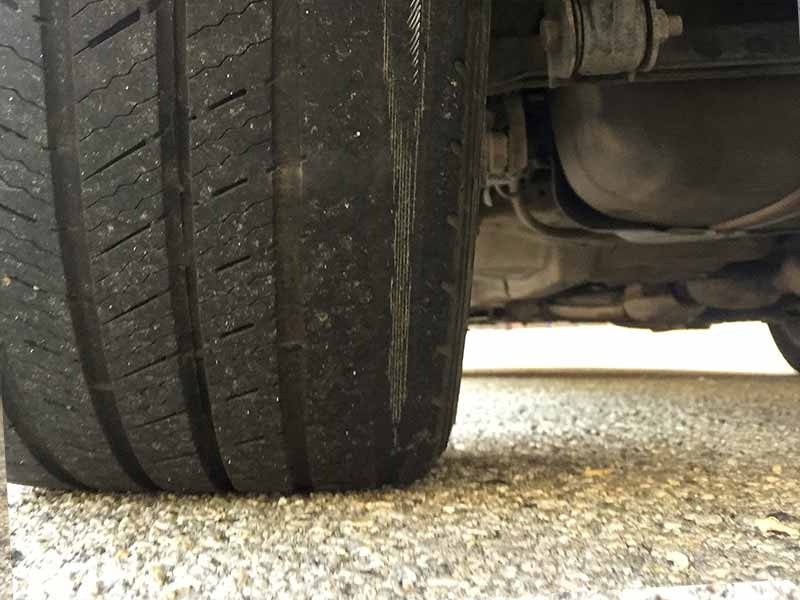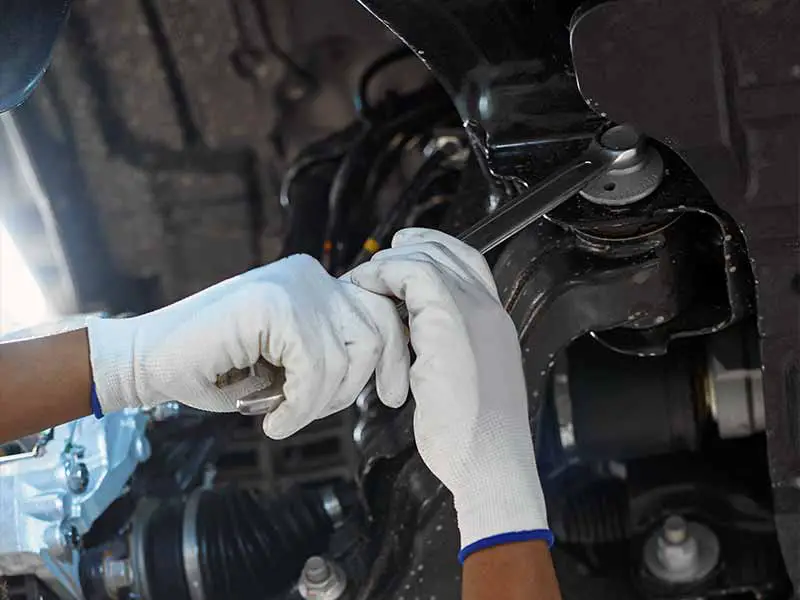Have you ever driven your car and felt like something wasn’t quite right? Like you were fighting with the steering wheel or your tires wore out faster than they should? These signs might not just be random events but crucial warnings your vehicle is sending about its alignment.
What Happens If You Don’t Get An Alignment?
Wheel alignment is the adjustment of a vehicle’s wheels to ensure they roll straight and make optimum contact with the road. Neglecting proper alignment can lead to safety risks, uneven tire wear, and additional costs in the long run.
In this article, we will delve into the importance of wheel alignment, signs that you need an alignment, reasons it might be challenging to get one, and the potential costs of ignoring this essential maintenance task.
Let’s take a closer look.

Understanding the Basics: Why Wheel Alignment Matters
When driving, it’s crucial that all parts of your vehicle work in harmony. One essential component in ensuring this harmony is wheel alignment. Let’s break down why it’s vital for both passenger cars and trucks.
What is Wheel Alignment?
Wheel alignment refers to the adjustment of a vehicle’s wheels to meet specific angles, ensuring that they’re set up to roll straight and make proper contact with the road. In simple terms, it ensures that your tires point in the right direction and sit flat on the ground.
Components Involved in Wheel Alignment
Several components play a role in the wheel alignment process:
- Tires: The primary contact point between your vehicle and the road. Good wheel alignment ensures even tire wear and a smoother ride.
- Steering Wheel: Should remain centered when driving straight. Misalignment may cause it to turn or vibrate unexpectedly.
- Suspension System: Consists of parts that support the vehicle’s weight and absorb road shocks. Misalignment can put unnecessary strain on these components.
The Benefits of Proper Wheel Alignment
Wheel alignment isn’t just about having a smoother driving experience; there are numerous advantages to ensuring your wheels are correctly aligned:
- Safety: Misaligned wheels can affect the vehicle’s handling, making it more challenging to steer and potentially leading to accidents.
- Economical Driving: Properly aligned wheels can improve gas mileage since the vehicle experiences less friction against the road.
- Prolonged Tire Life: Incorrect alignment causes uneven and excessive tire wear. By maintaining tire alignment, you’re ensuring that your tires last longer and wear out uniformly.
- Protecting Your Vehicle: Misalignment can put undue stress on various car parts, including brakes and suspension. Regular alignments can prevent these parts from wearing out prematurely.
How Often Should You Check?
While there isn’t a one-size-fits-all answer, some general guidelines can be followed:
- After any significant impact or accident, such as hitting a pothole.
- When replacing tires.
- If you notice symptoms of misalignment like poor tire wear, a vibrating steering wheel, or the vehicle pulling to one side.

Recognizing the Signs You Need a Wheel Alignment
When on the road, your vehicle often communicates its needs through various signs. Understanding these can help prevent bigger issues in the future. Below are the common indicators that suggest your car or truck might require a wheel alignment.
Uneven Tire Wear
Unevenly worn tires are a tell-tale sign of poor alignment. There are a few wear patterns to look out for:
- Edge Wear: When either the inner or outer edge of the tire wears out faster than the center.
- Center Wear: When the center of the tire wears out faster than the edges.
- Patchy Wear: Random, uneven wear patches across the tire.
Steering Wheel Issues
The steering wheel often gives away symptoms of misalignment:
- Off-Center Steering Wheel: If you’re driving straight but your steering wheel isn’t centered, it’s a sign of misalignment.
- Vibration: A steering wheel that vibrates when driving, especially at specific speeds, can indicate alignment problems.
Vehicle Pulling to One Side
A clear sign of alignment issues is when your vehicle drifts or pulls to one side, even when you intend to drive straight. You might notice:
- Mild Pull: Vehicle slightly drifting towards the left or right.
- Severe Pull: Having to continually counter-steer to keep the vehicle going straight.
Other Notable Indicators
Some other signs might be less evident but are equally important:
- Abnormal Noises: Hearing noises, especially while turning, can suggest alignment or suspension issues.
- Rapid Tire Wear: If your tires seem to wear out faster than usual, it could be due to misalignment.
- Steering Struggle: Feeling resistance or difficulty when steering could point towards alignment problems.
Common Reasons You Can’t Get an Alignment
While wheel alignment is a regular maintenance task for most vehicles, sometimes there might be underlying issues or circumstances preventing it from being executed effectively. Let’s explore the common reasons you might face challenges getting an alignment.
Damaged Suspension Components
The alignment process is closely tied to the suspension system. If parts of this system are damaged, it can make proper alignment challenging:
- Worn Out Bushings: These act as cushions for parts of your suspension system. When worn, they can hinder alignment.
- Damaged Struts or Shocks: These parts absorb road shocks. If damaged, they can affect alignment accuracy.
Structural Issues Due to Accidents
Accidents, even minor ones, can cause:
- Frame Damage: Any distortion or damage to the vehicle’s frame can prevent accurate alignment.
- Bent or Broken Components: If parts of the suspension or steering systems are bent or broken, alignment becomes difficult or impossible.
Worn Out or Incorrect Tires
Tires play a pivotal role in alignment:
- Mismatched Tires: If tires are of different brands, sizes, or significant wear differences, it can affect alignment.
- Severely Worn Tires: Extremely worn-out tires might not hold alignment well.
Age of the Vehicle
Older cars can sometimes present unique challenges:
- Rust and Corrosion: Over time, parts can rust or corrode, making adjustments for alignment challenging or impossible.
- Outdated Components: Some older cars might have components that are not as adjustable as those in modern vehicles.
Other Underlying Mechanical Issues
There can be other mechanical problems preventing alignment:
- Steering System Problems: Issues in the steering mechanism can hinder proper alignment.
- Worn Out Bearings: If wheel bearings are worn or damaged, they can prevent accurate wheel alignment.

Cost Considerations: Investing in Your Vehicle’s Health
Maintaining a vehicle can sometimes seem like a never-ending list of tasks and expenses. However, when we consider the long-term implications of neglect, the value of regular maintenance, like wheel alignment, becomes clear. In this section, we’ll address the costs associated with alignment and its importance in the grand scheme of car care.
How Much Does an Alignment Cost?
The cost of a wheel alignment can vary based on several factors:
- Type of Vehicle: Trucks might have a different pricing structure compared to passenger cars.
- Region and Service Provider: Prices can vary based on where you live and which service provider you choose.
- Two-wheel vs. Four-wheel Alignment: A full four-wheel alignment is typically more expensive than a two-wheel alignment.
- Additional Repairs: Sometimes, alignment might reveal other issues that need addressing, adding to the overall cost.
The Cost of Ignoring Alignment
While there’s an upfront cost for alignment, neglecting this service can result in higher expenses in the long run:
- Increased Tire Wear: Misalignment can cause rapid and uneven tire wear, requiring earlier replacements.
- Potential for Damage: Improper alignment can strain various car components, leading to potential damages and replacements.
- Reduced Fuel Efficiency: Misalignment can decrease fuel efficiency, leading to increased fuel costs over time.
Alignment as a Preventative Measure
Regular wheel alignment can be seen as an investment:
- Extend Tire Life: Properly aligned wheels ensure even tire wear, maximizing the lifespan of your tires.
- Avoid Bigger Repairs: By checking alignment regularly, you can catch and address minor issues before they escalate.
- Optimized Vehicle Performance: Ensuring your wheels are aligned contributes to a smoother ride, better handling, and improved fuel efficiency.
Resources
Below are some links you may find helpful when learning about tires
Final Thoughts
Driving with misaligned wheels can not only lead to increased and uneven tire wear but can also compromise the overall handling of your vehicle, posing potential safety risks. It’s essential to recognize the signs, such as an off-center steering wheel, vibrations, or your vehicle pulling to one side, and address them promptly. Moreover, investing in regular alignments can save you from more significant expenses down the line by ensuring optimal tire life and fuel efficiency.
Good luck and happy motoring.





